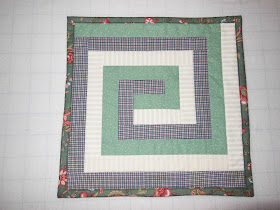Yes, the blocks should have been shipped off by now, but Thanksgiving happened and it was the best TG ever! Now that all the feasting is done, it's back to finishing those blocks! To refresh our memories, here are the blocks at 6-1/2 inches and you can catch up on the start of this project here.
So, on with the sewing and pressing and trimming and pressing...
And here they are at 10-1/2" square.
Notice how they look right up against one another. Actually let me show you a close up of a pair of blocks. They kind of blend into each other.
Here are two blocks with sashing and four without...Okay, I have to admit each grouping has its own charm. However, in order to create wonkiness, the sashing is necessary. The black borders give them a stained glass look, don't you think?
It's late now, so we'll save the finale for another day, but hold on to this last image because the finished blocks look amazing!
Cheers!
And here they are at 10-1/2" square.
Notice how they look right up against one another. Actually let me show you a close up of a pair of blocks. They kind of blend into each other.
Here are two blocks with sashing and four without...Okay, I have to admit each grouping has its own charm. However, in order to create wonkiness, the sashing is necessary. The black borders give them a stained glass look, don't you think?
It's late now, so we'll save the finale for another day, but hold on to this last image because the finished blocks look amazing!
Cheers!





































